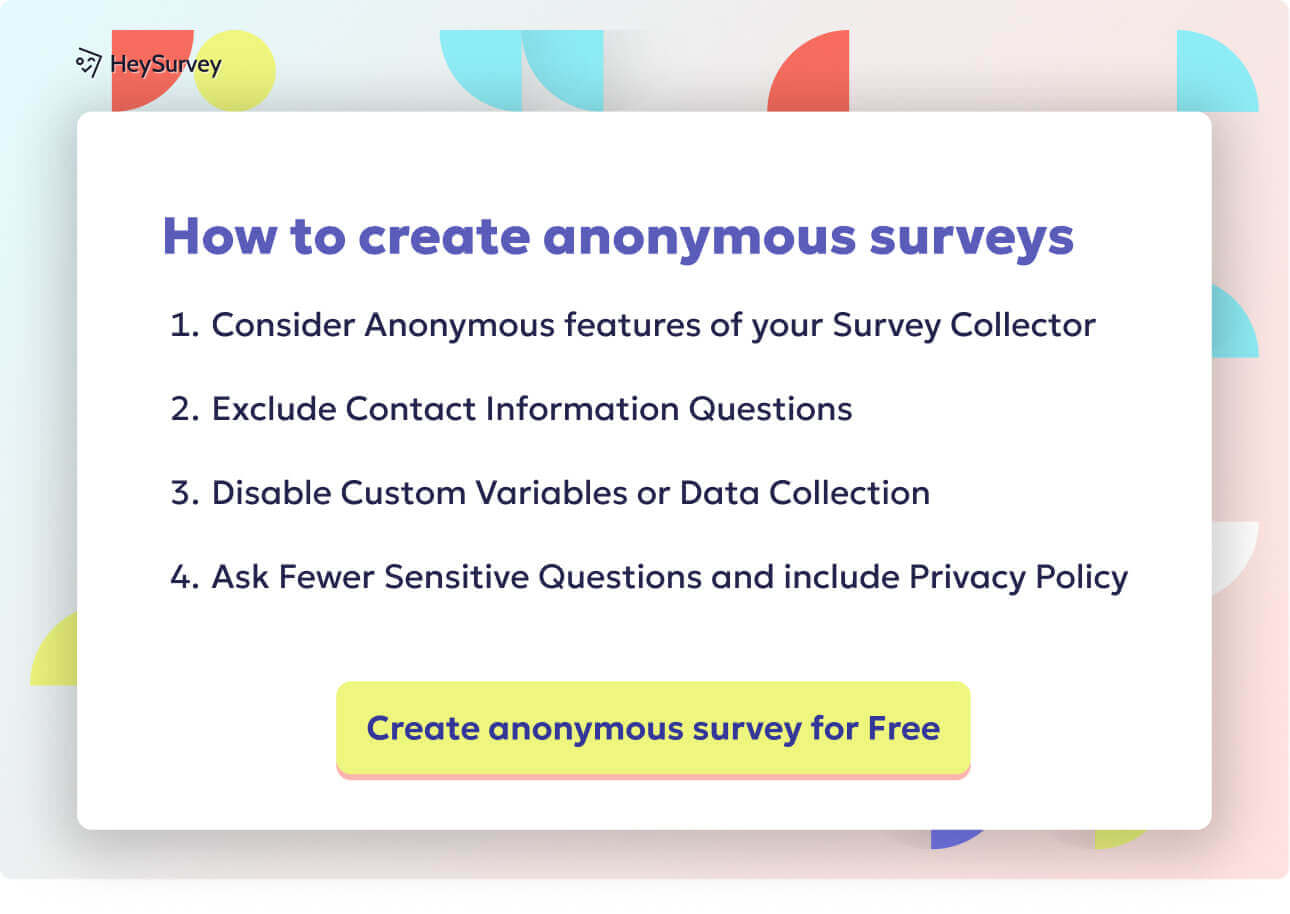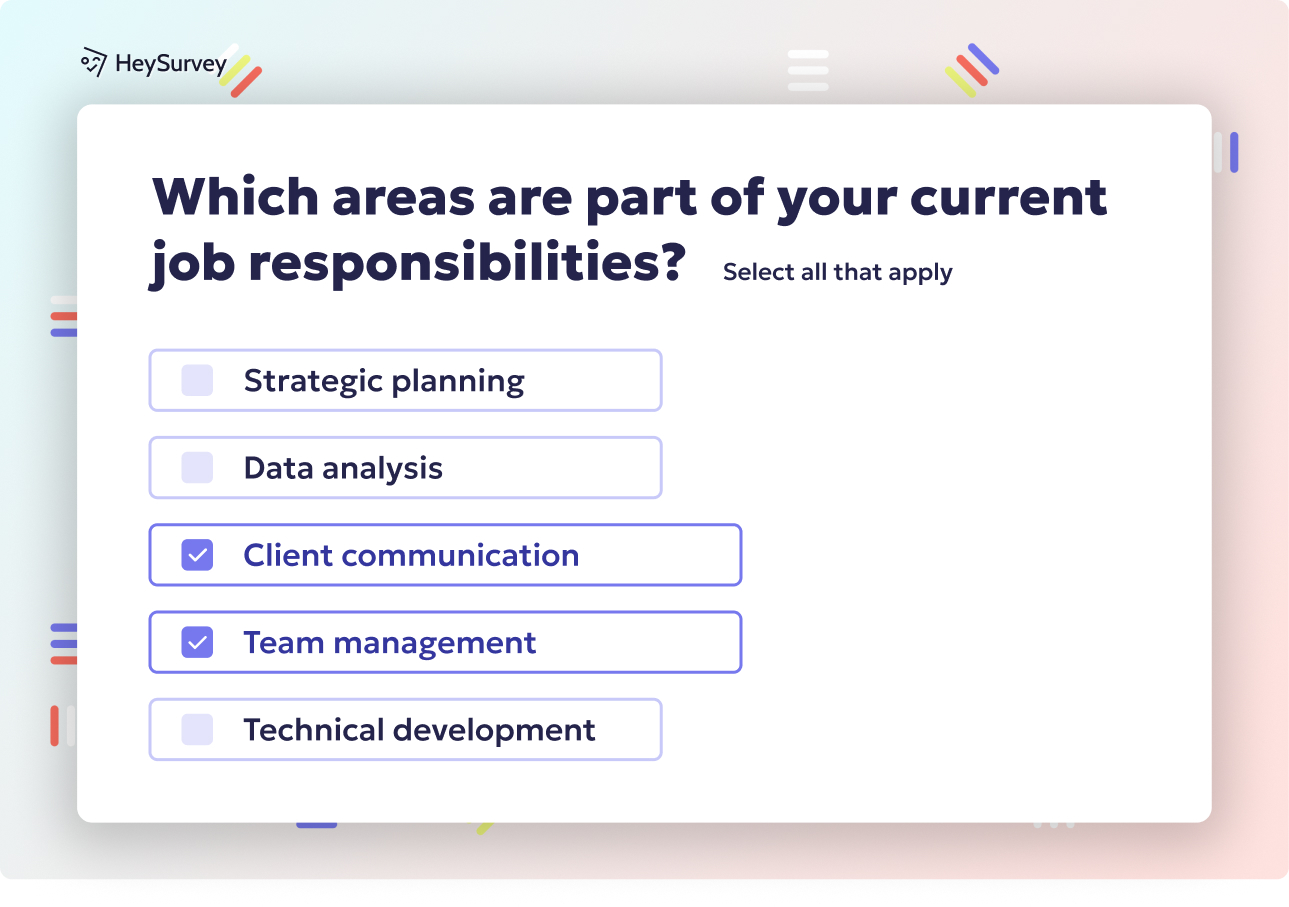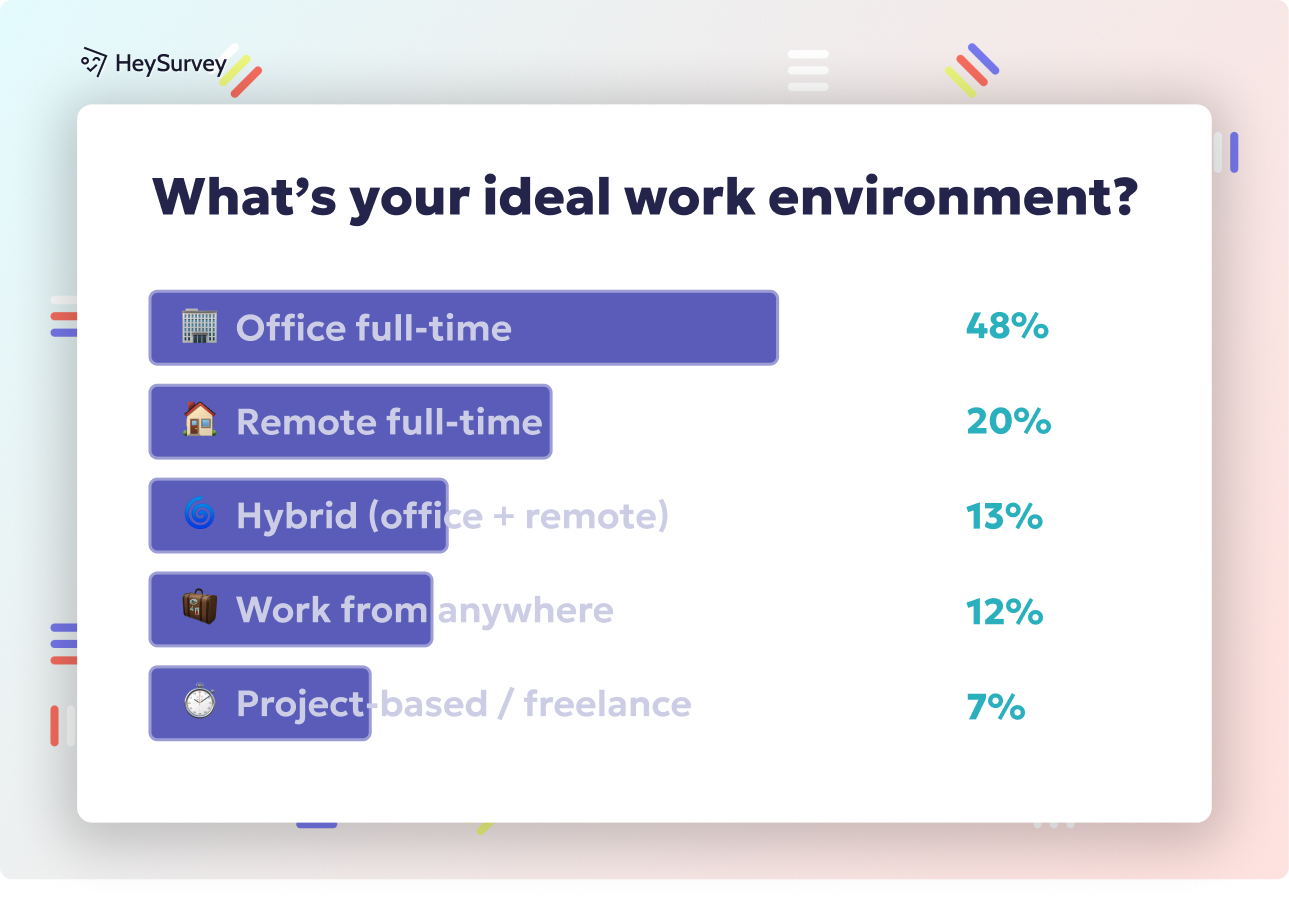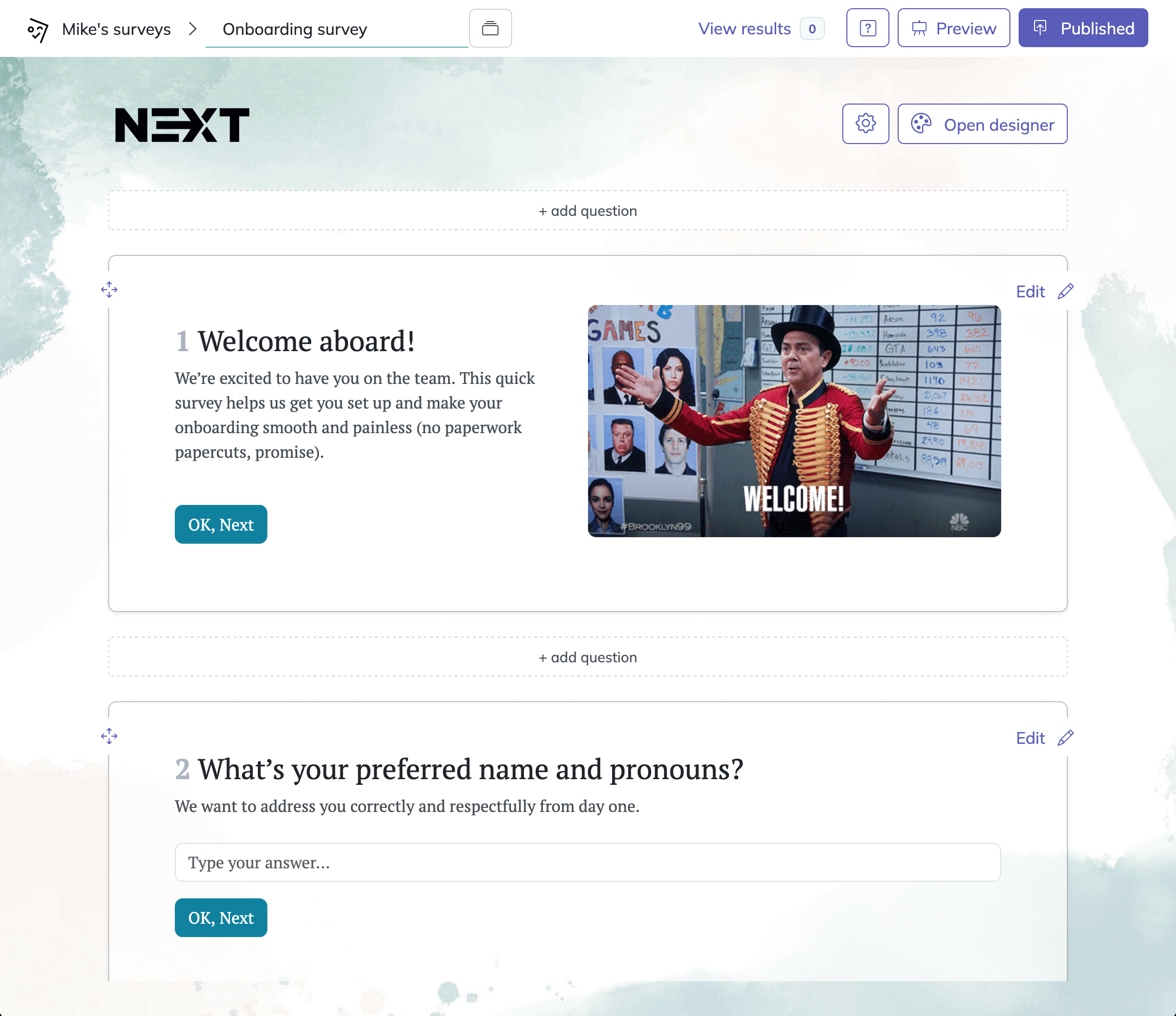30 Language Survey Questions: Types, Uses & Winning Examples
Explore 30 expert language survey questions across 7 types to assess proficiency, preferences, motivation, and workplace needs effectively.
Language survey questions open the door to deeper understanding in every corner of our multilingual, globalized world. Whether you're rolling out a language questionnaire for HR, running a multilingual feedback study, or designing a quick language needs analysis, these tools shape smarter teaching, clearer communication, and more inclusive experiences. Let’s explore why crafting the right language survey is the secret sauce for schools, companies, and tech teams everywhere.
Language Proficiency Assessment Survey
Why & When to Use
Want to know how well someone really communicates in a particular language? Cue the language proficiency assessment survey! This powerful tool helps organizations, educators, and employers gauge language competency—a must for course placements, professional certifications, and customized training programs.
Whenever you're about to place learners into classes, assign employees to international projects, or certify language levels, you’ll want a language competency survey on hand. These surveys ensure individuals aren’t over- or under-challenged, which supports both skill growth and confidence. HR pros, recruiters, and learning & development managers adore the fluency questionnaire for steering language upskilling resources where they matter most.
A well-designed language questionnaire helps:
- Pinpoint strengths and weaknesses in speaking, listening, reading, and writing.
- Determine who needs intensive training and who is ready for advanced challenges.
- Save time (and frustration) by customizing materials and support from day one.
No more guessing how comfortable new team members are with technical English, Spanish business emails, or giving presentations in Mandarin! Whether you’re onboarding globally or teaching locally, a proficiency survey sets your group up for real-world success.
Five Sample Questions
Which CEFR level best describes your current ability in English? (A1–C2)
How confident are you reading professional emails in the target language? (1–5 scale)
In the past month, how many hours have you spoken the target language outside class?
Rate your ability to give a 10-minute presentation in the target language. (Very poor → Excellent)
Select the grammar areas you still struggle with. (Multiple choice: verb tenses, articles, etc.)
A strong fluency questionnaire goes beyond test scores—it reveals hidden gaps, directs new learning, and sets everyone up for smooth communication ahead.
Self-assessments of language proficiency often correlate moderately with objective measures but can be influenced by individual biases, suggesting the need for supplementary evaluation methods. (frontiersin.org)

Creating your own language survey with HeySurvey is a breeze! Follow these three simple steps to go from idea to live survey in no time.
Step 1: Create a New Survey
Head over to HeySurvey and log in (or start without an account if you just want to explore!). Click Create Survey and choose your starting point:
- Pick a pre-built template if you want a head start with language-related questions.
- Or select Empty Sheet to build your survey from scratch with full control.
Give your survey a name inside the Survey Editor so you can easily spot it later.
Step 2: Add Questions
Now it’s time to fill your survey with questions. Click Add Question and choose from different types:
- Use Choice questions for multiple-choice or checkbox answers (think language proficiency levels or preferred languages).
- Pick Scale questions for confidence ratings or motivation importance.
- Insert Text questions for open-ended feedback, like suggestions on multilingual support.
Customize each question’s wording, make them required if needed, and add an “Other (please specify)” option to catch every answer. Want to tailor the journey? Use branching to direct respondents through different paths based on their replies.
Step 3: Publish Survey
Once your questions look good, hit Preview to see how your language survey feels on desktop and mobile. When it’s perfect, click Publish and grab your sharable link. Now you’re ready to send it out and start collecting valuable feedback!
Bonus Step: Apply Branding
Add your organization’s logo and tweak colors, fonts, and backgrounds in the Designer Sidebar to make your survey truly yours. A branded survey looks professional and builds trust with respondents.
Bonus Step: Define Settings
Fine-tune when your survey launches or closes, set a response limit, or create a custom thank-you redirect URL in the Settings panel. You can even allow respondents to view overall results if that suits your goals.
Bonus Step: Branch Into Multiple Paths
Make your survey smart! With branching, you can ask follow-up questions only when relevant—like probing motivation deeper for beginners but skipping it for advanced speakers. This keeps surveys engaging and quick for everyone.
Ready to get started? Click the template button below, and HeySurvey will load a ready-to-go language survey framework to customize as you wish!
Language Usage & Preference Survey
Why & When to Use
The secret to truly personalized content and communication? Language usage and preference surveys. These bite-sized questionnaires reveal what languages your customers, students, or employees really use, not just what’s listed on their résumés.
If your organization is targeting new audiences, planning to localize interfaces, or rolling out multilingual support, understanding real-world usage is vital. Marketers love discovering which language their audience prefers for marketing messages, while UX designers turn to this feedback to shape websites, apps, and customer portals everyone can use comfortably.
Let a language questionnaire uncover:
- Which home languages, dialects, or regional variants people prefer.
- How your audience switches between languages online.
- The communication channels—chat, phone, email—they trust most when using their chosen language.
Knowing your user’s comfort zone means better engagement, easier troubleshooting, and more tailored support at every stage.
Five Sample Questions
What language do you speak most often at home?
Which language do you prefer for receiving customer support?
In which language would you like marketing emails?
How frequently do you switch languages when browsing online? (Never → Always)
Rank the top three languages you read fluently.
The power of a multilingual feedback survey is all in the details. Harness this data, and both your users and your business will speak the same language—literally!
A survey of 8,709 consumers across 29 countries found that 76% prefer purchasing products with information in their native language. (csa-research.com)
Language Learning Motivation & Barriers Survey
Why & When to Use
Ever wonder what truly fuels language learners? Enter the language learning motivation and barriers survey—a tool designed to get to the heart of what motivates people and what holds them back.
Schools, ed-tech apps, and corporate training teams use this survey to keep learners inspired and moving ahead. Understand your community’s learning drivers, and you'll curb dropouts and make every lesson more engaging. Do you want to raise completion rates or boost satisfaction in your courses? A quick barriers to language acquisition survey tells you what’s working and where learners need more support.
This type of survey unveils:
- Why people sign up (career, travel, a love of languages).
- Whether they have the time or resources to follow through.
- Pain points: lack of time, low confidence, or trouble with specific formats.
Uncover these truths, and you'll know exactly how to set your students or employees up for language learning wins!
Five Sample Questions
What is your primary reason for studying this language? (Career, travel, culture, etc.)
How much time can you realistically dedicate per week?
Which learning obstacles do you face? (Select all that apply)
How important is certification for you? (1–5)
Which learning formats do you prefer? (Live, self-paced, hybrid)
By making your language learning motivation survey relatable and relevant, you’ll empower every participant to share openly. This turns your feedback into action plans—and classroom or training heroes will quickly follow!
Workplace Language Needs & Training Survey
Why & When to Use
The modern workplace is more international than ever, bringing together speakers of many languages and backgrounds. The workplace language needs and training survey lets HR, DEI, and compliance teams pinpoint language training priorities, communication risks, and growth opportunities.
Why use this survey? To ensure messages about safety, compliance, or day-to-day workflow actually land with everyone—not just native speakers. An employee language needs analysis can highlight which departments need more support or which training resources will unlock collaboration between diverse teams.
This survey is a goldmine for:
- Mapping which roles or job functions require secondary or tertiary languages.
- Pinpointing times language misunderstandings have led to errors or even safety risks.
- Creating flexible training schedules that respect your team’s realities.
From the C-suite to the break room, clear communication keeps everyone informed, safe, and included.
Five Sample Questions
Which tasks require you to use a language other than your native tongue?
Rate your comfort level writing technical documents in that language.
Which departments would benefit most from language training?
Have language misunderstandings ever led to errors or safety issues? (Yes/No + open text)
What training schedule works best for you? (Before work, during work, after work)
Let your corporate language training survey steer budgets and training plans that hit the mark. When you speak your workforce’s language, they'll help your company soar.
A British Council survey found that 52% of UK working adults modify their speech at work to sound more professional, with 23% adjusting their accent. (britishcouncil.org)
Multilingual Customer Support Experience Survey
Why & When to Use
Delivering great service across multiple languages? Cue the multilingual customer support experience survey. For SaaS, ecommerce, telecommunications, and more, this survey shows exactly how well your help desk delivers for every customer, no matter their language.
Use this tool post-support interactions to reveal where you truly shine—or where improvement is overdue. Find out whether customers received support in their preferred language, how smooth the chat or call was, and whether language confusion slowed down solutions. Armed with this knowledge, your support teams can break barriers, prevent churn, and keep satisfaction scores sky-high.
A must-have for:
- Evaluating the real impact of language on the customer journey.
- Revealing which new languages are in demand.
- Collecting first-hand feedback on translation or agent fluency.
With clear language quality feedback you’ll transform regular support into a truly global customer delight engine.
Five Sample Questions
Was support available in your preferred language? (Yes/No)
Rate the agent’s fluency in your language. (1–5)
Did language barriers lengthen resolution time? (Yes/No)
How would you improve our multilingual support? (Open text)
Which additional languages should we add?
A winning multilingual help desk survey is like a voice line for every customer—across every language your business touches.
Language Accessibility & Inclusivity Survey
Why & When to Use
True accessibility means everyone can access your content, products, or services, regardless of language. That’s where the language accessibility and inclusivity survey comes in—a favorite among schools, government agencies, product teams, and DEI leads.
These surveys ensure your digital platforms comply with accessibility standards like ADA and WCAG, while also making services more inclusive for Limited-English-Proficient (LEP) communities. If you're designing new content, tweaking interfaces, or planning outreach, a quick inclusive language assessment checks that nothing gets lost in translation.
Unlock these benefits:
- Find out if your website, app, or documents are available in the languages people actually need.
- Identify which formats (like plain language, captions, audio) make the most impact.
- Discover if language issues have driven users away—so you can win them back.
Gathering regular accessibility feedback guarantees no one is left behind, keeping your services open (and friendly) to all.
Five Sample Questions
Do you find our website content available in a language you understand well?
How clear are the translation subtitles/captions? (1–5)
Which formats enhance your comprehension? (Plain language, audio, sign language, etc.)
Have you abandoned services because of language difficulty? (Yes/No)
What additional accessibility improvements would help you?
The best language accessibility survey is the bridge to full participation. Ask, listen, and adapt—your users will thank you.
Heritage Language Maintenance & Preservation Survey
Why & When to Use
Languages encapsulate entire cultures, stories, and community bonds, but many are at risk of fading away. Enter the heritage language maintenance and preservation survey. Linguists, NGOs, community groups, and families use these to take the pulse of endangered languages and to steer revitalization efforts.
This survey is especially powerful in multicultural neighborhoods, diaspora communities, and anywhere families wish to pass on their linguistic roots. Mapping how often languages are spoken, shared, and celebrated shines a spotlight on gaps, needs, and community vibrancy.
Community-driven insights uncover:
- Who speaks (and understands) the heritage language, across generations.
- Which events, venues, or resources spotlight the language.
- What support—books, classes, media—families need to keep traditions alive.
These surveys provide the kickoff data for campaigns, funding drives, or school programs focused on keeping heritage languages strong.
Five Sample Questions
How often do you speak your heritage language at home?
Do younger family members understand the language? (None, Some, Fluently)
Which community events use the heritage language?
What resources would encourage you to teach the language to your children?
Rate the urgency of preserving your heritage language. (Low → Critical)
A vibrant language preservation questionnaire can grow into a movement—one conversation, and one generation, at a time.
Best Practices: Dos & Don’ts for Crafting Language Survey Questions
Getting the most from any language survey means crafting questions that are clear, relevant, and welcoming to all backgrounds. Want your data to sing? Follow these best practices and dodge common pitfalls.
Dos
- Use plain, bias-free wording so everyone understands.
- Offer multilingual versions of your questionnaire to reach more respondents.
- Pilot test your survey with participants from different backgrounds and proficiency levels.
- Allow “Other (please specify)” on every important question for openness.
- Make sure your survey is mobile friendly—many people respond on their phones.
Don’ts
- Avoid mixing multiple ideas into one question (“double-barreled” questions often confuse everyone).
- Don’t overuse academic jargon or assume everyone knows technical terms.
- Never assume literacy or language proficiency—keep instructions simple and use help text where needed.
- Don’t miss out on testing: an untested survey can result in missing or misleading data.
When you follow these tips, your next language survey will:
- Welcome more voices and different perspectives.
- Lead to clearer, actionable insights.
- Encourage honest feedback, boosting your survey’s reliability.
Ready to craft your own questions? Check out our sample templates and guides on building a language survey that works for everyone. Start asking, start listening, and see the difference real feedback makes in your classroom, workplace, or community!
Language surveys aren’t just about ticking boxes—they’re about building bridges, boosting confidence, and supporting every voice. Choose the right survey for your needs, and watch both data and relationships flourish. With the right questions, you’ll make your organization, school, or community a more connected, inclusive place. And who knows? Your survey might just be the start of a whole new conversation.
Related Demographic Survey Surveys

25 Poverty Survey Questions for Measuring Household Poverty Effectively
Explore a comprehensive guide with over 35 poverty survey questions covering demographics, income...

32 Questions About Homelessness: Essential Surveys to Understand Housing Insecurity
Explore 27 essential questions about homelessness across demographics, attitudes, needs, services...

30 Demographic Survey Questions for College Students Guide
Explore 35 essential demographic survey questions for college students covering identity, academi...

